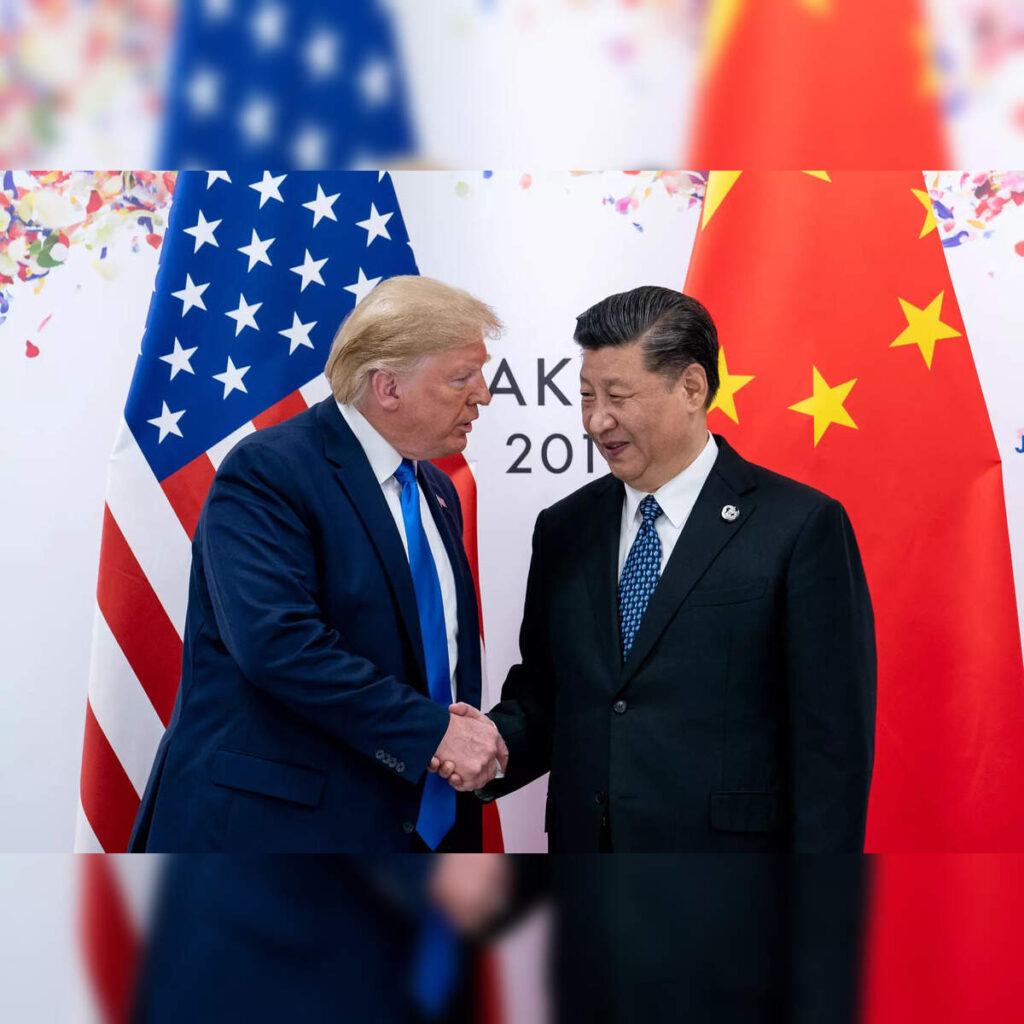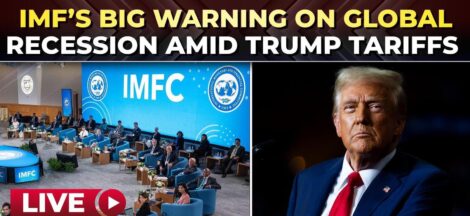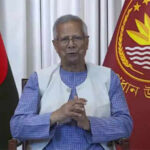By T N Ashok
WASHINGTON: China US tariff war is back in the news and focus as the Chinese delegation reached London for the second round of trade talks beginning Monday. The first round was held in Geneva last month and the three day talks prepared a framework for carrying forward the negotiations towards an agreement.
The latest round of talks come through amid China’s claims its exports to the U.S. dropped by more than a third in May — the sharpest such decline in more than five years.. The London meeting follows President Donald Trump’s phone conversation with the Chinese President Xi Jinping last week. The initiative was mainly from Trump’s side as he was told by his advisers that the more U.S. made delay in arriving at a trade agreement with China, the more difficult it would be for the Trump administration to organize the deals with the other important trading partners, especially the European Union. The issue of the controversial rare earth minerals is expected to be taken up in the discussions.
The U.S.-China trade rift has already been evidenced by the slowdown in the exports and imports between the two countries with China on Monday reporting a 34.5% decrease in exports to the U.S. in May — the biggest drop since February 2020, at the beginning of the Covid-19 pandemic, CNBC reported.
Investors were relieved last month when U.S. and Chinese representatives meeting in Geneva said they had reached a preliminary agreement to suspend most of the tit-for-tat tariffs they had imposed on each other’s goods, which had reached as high as 145%. But in recent weeks both countries have accused each other of violating the agreement.
The new round of talks comes four days after President Donald Trump and Chinese Xi Jinping held a lengthy phone call that Trump said focused mostly on trade. The call, which Trump said lasted about 90 minutes, was the first between the two leaders since Trump returned to office, though they spoke a few days before his January 20 inauguration.
Trump, who had complained a day earlier that Xi was “extremely hard to make a deal with,” said in a Truth Social post that the call “resulted in a very positive conclusion” for both countries. He told reporters Friday that Xi had agreed to resume the flow of rare earth minerals and magnets to the U.S. after imposing export controls on the products, which are crucial components for electronics, automobiles and other industries.
Trump said his administration was “very far advanced on the China deal” and that the meeting on Monday was about “clarification.” The U.S. side will be represented in London by Treasury Secretary Scott Bessent, Commerce Secretary Howard Lutnick and U.S. Trade Representative Jamieson Greer, while the Chinese delegation will be led by Vice Premier He Lifeng. Bessent, Greer and They were all in Geneva last month.
Reports from Tokyo suggested that shares jumped and the dollar pared recent gains on Monday as Asian markets reacted to better-than-expected US jobs data ahead of talks in London aimed at mending a trade rift between the US and China. US job growth slowed in May by less than had been forecast, data showed on Friday. But dour economic readings from China added to evidence the trade war is taking a toll.
China’s export growth slowed to a three-month low in May, while factory-gate deflation deepened to its worst level in two years, separate reports showed today. Even so, trade optimism lifted Chinese shares. Hong Kong’s Hang Seng Index rose 0.8 per cent, touching the 24,000-point level for the first time since March 21. China’s blue-chip CSI300 Index added 0.2 per cent.
Attention now turns to US inflation data on Wednesday that will feed into expectations for the timing of any rate cuts by the Federal Reserve. The Fed is in a blackout period ahead of its June 18 policy decision. Markets are facing “mixed fortunes” today as they balance optimism over trade and the US economy against the potential for social unrest in California, said Jeff Ng, Head of Asia Macro Strategy at SMBC.
“The trade talks, if there’s any progress, may help as well, but markets may not have priced in a lot of breakthroughs for that,” Ng said. “In the meantime, we are also quite cognisant that in the US there are protests in LA and the National Guard is also being sent in, so we have to be on the watch for event risk as well.”
Since the 1980s, Trump had advocated tariffs to eliminate the U.S. trade deficit and promote domestic manufacturing, saying the country was being “ripped off” by its trading partners; imposing tariffs became a major plank of his presidential campaign. Nearly all economists who responded to surveys conducted by the Associated Press and Reuters said Trump’s tariffs would do more harm than good to the American economy, and some economists advocated alternate means to address trade deficits with China.
With the United States–China Relations Act of 2000, China was allowed to join the World Trade Organization (WTO) in 2001 and was given a most favoured nation (MFN) status. The growth of trade accelerated after China’s entry into the WTO in 2001, with the US and China becoming one another’s most important trading partners.
The US has consistently imported more from China than it has exported to China, with the bilateral US trade deficit in goods with China rising to $375.6 billion in 2017. According to Keyu Jin, This trade deficit is driven by a difference in saving rates between the US and China (Chinese households save more than 30% of disposable income on average, compared to 7% in the United States) while according to Xiaohuan Lan, the deficit is driven by the way the economic systems of the two countries are structured: the U.S. imports more than it exports since its domestic consumption is greater than its domestic production of goods while China exports more than it imports since its domestic production is greater than its domestic consumption of goods.
Since the entry of China into the WTO in December 2001, the decline in U.S. manufacturing jobs has accelerated (the China shock). The Economic Policy Institute estimated that the trade deficit with China cost about 2.7 million jobs between 2001 and 2011, including manufacturing and other industries. Since 2000, there have been several attempts to repeal the Permanent Normal Trade Relations with China. The strongest attempt was in 2005 when House Representative Bernie Sanders and 61 co-sponsors introduced a legislation that would repeal the PNTR with China.
There have been studies which have explored the strategic dimension of the trading relationship which some have argued is the best way to understand the main concerns over the way the relationship has developed. The US government has at times criticized various aspects of the US-China trade relationship, including large bilateral trade deficits, and China’s relatively inflexible exchange rates.
The administrations of George W. Bush and Barack Obama imposed quotas and tariffs on Chinese textiles in order to shield US domestic producers, accusing China of exporting these products at dumping prices. During the Obama administration, the US additionally accused China of subsidizing aluminium and steel production, and initiated a range of anti-dumping investigations against China.
During these two US administrations, US-Chinese trade continued to grow. During this time, China’s economy grew to be the second largest in the world (using nominal exchange rates), second only to that of the US. Large-scale Chinese economic initiatives, such as the Belt and Road Initiative, the Asian Infrastructure Investment Bank and “Made in China 2025” alarmed some US policymakers.
More broadly, China’s economic growth has been viewed by the US government as a challenge to American economic and geopolitical dominance. American proponents of tariffs on China have argued that tariffs will bring manufacturing jobs to the US; that bilateral tariffs should be reciprocal; that the US should eliminate its trade deficit with China; and that China should change various policies governing intellectual property and investment.
Most economists are skeptical of the ability of tariffs to achieve the first three of these goals. A study estimates that U.S. exports to China provide support to 1.2 million American jobs and that Chinese multinational companies directly employ 197,000 Americans, while U.S. companies invested $105 billion in China in 2019.
Economists have studied the impact of trade with China and increasing labor productivity on employment in the American manufacturing sector, with mixed results. Most economists believe that the American trade deficit is the result of macroeconomic factors, rather than trade policy. Two 2020 Congressional Research Service reports said most economists concluded that the long-run net effect of trade on the economy as a whole was positive and that attempts to address the trade deficit without addressing the underlying macroeconomic conditions would likely be counterproductive and create distortions in the economy.
The U.S. and China held talks earlier in Beijing between U.S. National Security Adviser Jake Sullivan and CCP Foreign Affairs Commission Office Director Wang Yi to prevent competition from escalating into conflict. The meetings aimed to stabilize strained relations and maintain open communication. (IPA Service)




 Bangladesh Is Finally Going For National Elections By April 2026
Bangladesh Is Finally Going For National Elections By April 2026 